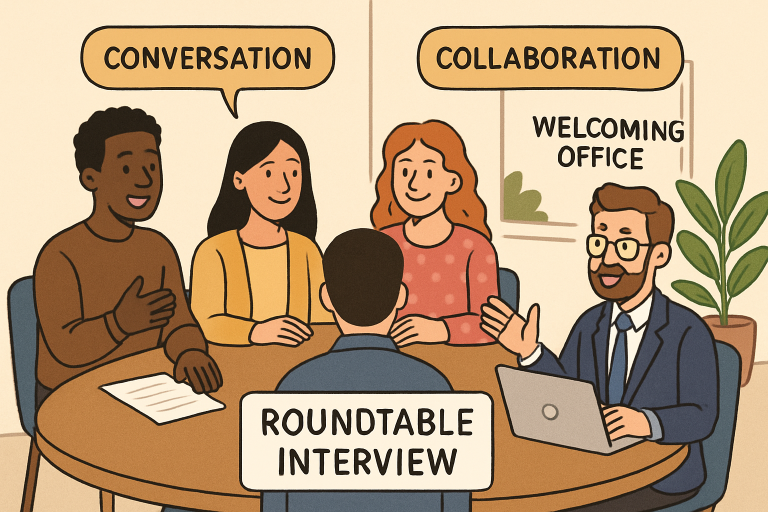Finding the right candidate for a role involves more than matching skills and experience—it also requires understanding how well an individual aligns with the organization’s values and work environment. This alignment can influence collaboration, communication, and long-term employee and team satisfaction. To explore this aspect during interviews, employers often look at how candidates respond to scenarios, their preferred work style, and their interpersonal approach in team settings.
To do this effectively, it’s essential to define company culture first. This includes shared values, expectations, and behaviors that shape employees’ daily experience. By clearly understanding and articulating these elements, interviewers can better evaluate whether a candidate’s approach complements the organization’s identity. Asking thoughtful, open-ended questions and observing authentic interactions during the interview process can reveal whether a candidate will thrive in that specific environment.
Define Your Company Culture
Before the interview process, it’s essential to understand your company’s unique culture. This involves capturing day-to-day behaviors, leadership expectations, workplace rituals, and priorities that differentiate your organization from others. A well-defined culture creates clarity for interviewers and candidates, aligning hiring practices around what the company truly cares about. Documenting everything from communication styles to feedback mechanisms and recognition programs can help. Companies should focus on candidates who actively seek input and view constructive criticism as growth opportunities. For a highly collaborative firm, focus on individuals who gain energy from shared projects and open dialogue. Embedding these core principles throughout the recruitment process helps attract individuals who will amplify your culture.
Develop Behavioral Interview Questions
Assessing cultural fit surpasses a superficial review of resumes or technical experience. This is where behavioral interview questions become invaluable. Behavioral interviews dig deeper, inviting candidates to share specific examples from their past experiences—revealing how they respond under pressure, adapt to change, collaborate with others, and apply your company’s preferred ways of working in practical scenarios. These questions serve as windows into candidates’ true priorities, revealing how they have handled situations that mirror the challenges and opportunities they’ll face in your business.
Example questions may include:
- “Can you describe a time when you had to adapt to a significant change at work?”
- “How do you handle conflicts with colleagues?”
- “What type of work environment do you thrive in?”
Each inquiry is designed to peel back the layers, prompting the candidate to reflect on their problem-solving techniques, communication style, resilience, and emotional intelligence. By presenting real-world situations rather than hypothetical ones, behavioral interviews bypass rehearsed answers, offering hiring managers critical insight into how candidates’ instincts and personalities align with the company’s culture. Repeatedly using these thoughtful, context-rich questions exposes patterns in candidates’ behavior, enabling more consistent, objective, and meaningful assessments. Over time, organizations that institutionalize this approach see higher retention and engagement, as every hire reinforces and elevates the company’s original values and vision.
Involve Team Members in the Interview Process
A comprehensive interview involves diverse perspectives from various backgrounds, seniority levels, and functional areas. This reduces bias and thoroughly explains a candidate’s interactions within the organization. Interview panels reflect the multi-faceted nature of the business, evaluating technical skills, interpersonal agility, collaboration, and adaptability. Team interviews expose candidates to the working environment, allowing them to assess the company’s potential for excellence. This method fosters agreement, prevents cultural gaps, and enhances the chances of attracting talent aligned with the company’s core values.
Be Aware of Unconscious Biases
Unconscious biases in the evaluation process can mask exclusion, even if well-intentioned. Companies should recognize and counteract these biases to create a more inclusive workforce. One effective way is through process standardization, which involves structuring interviews with pre-determined questions for all candidates. Recording impressions independently before group discussions reduces the risk of dominant voices skewing the final verdict. Interviewer education can also counter bias by encouraging honest discussion of hidden lenses. Standardizing structure and evaluation criteria enhances fairness and focuses on what truly matters for success.
Utilize Situational Judgment Tests
Situational judgment tests (SJTs) are valuable for focusing on a company’s culture and expectations. They involve placing candidates in simulated work scenarios and asking them to respond or solve challenges, mirroring the actual dilemmas they would face. These highly customizable assessments reflect specific attitudes towards innovation, conflict resolution, client service, or decision-making. SJTs reveal a candidate’s genuine instincts and approaches aligned with workplace realities, providing valuable insight beyond polished interview performances. This layer of insight complements other hiring processes.

